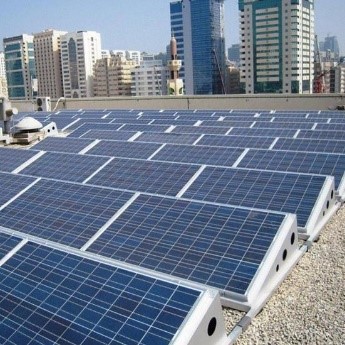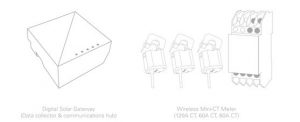Solar Stata – The future is near
Few apartment buildings benefit from solar energy, but this is proposed to change.
There is no doubt that solar is on the rise. One and a half million Australian homes now have solar power, but next to no apartments benefit directly from solar.
A relatively small number of strata buildings in Australia do have solar power that has helped reduce common area energy bills, but almost none have been able to deliver solar to the apartments. This is because up until now, there has been no way to distribute the solar power beyond common power and/ or bill for the solar power provided. For example, residents may be able to purchase solar generation at a rate of 20c/kwh instead of the grid price of 30c/kwh, thereby saving them 10c/kWh on electricity costs when the panels are generating.” according to the study.
Based recent case studies, and dependant on the system and site requirement, payback periods of between 4.5 and 7 years would be typical. Solar power for common area is great, but a solar system that produces more power than the common area is using at any time, is feeding the excess power to the grid for relatively little benefit to the building, due to low feed-in tariffs.
According to a research paper from the University of Queensland “These low feed in tariffs provide poor financial incentive for strata to install a solar panel array of a size that will exceed that daytime usage in common areas… Thus, it is most economically efficient to size the system to only meet common area needs”.
This can be over come by batteries, although batteries at this time are still relatively expensive. Enter the new player Digital Solar! Digital Solar allows a solar system to distribute the power to where it will be of most benefit.
“Enabling the sale of electricity generated from solar panels to both common areas and residential apartments drastically increases the daytime energy consumption that can be powered by solar and hence increases the maximum system size whilst still avoiding grid feed in. In turn, this increases the quantity of grid electricity consumption that can be avoided, reducing emissions and potentially resulting in savings.
Digital Solar allows the sale of solar energy to both common and private residential areas, and hence has the potential to increase the maximum viable system size…
The technology is a union of advanced meters, cloud processing and bill creation software that works with existing solar PV technology. Key system components are presented below.
In the case of strata buildings, Digital Solar’s energy tracking capabilities and billing architecture allow solar electricity to offset common area usage and then on sell any excess generation to private apartments (McGregor 2016). This enables reduced energy usage and increased savings for all participants. By offsetting daytime common area usage, the Owners Corporation saves on grid consumption costs. Residents are also able to save by purchasing energy generated by the panels at a rate lower than they would pay for grid energy supply. For example, residents may be able to purchase solar generation at a rate of 20c/kwh instead of the grid price of 30c/kwh, thereby saving them 10c/kWh on electricity costs when the panels are generating.” according to the study.
Based recent case studies, and dependant on the system and site requirement, payback periods of between 4.5 and 7 years would be typical.
As the costs of power continue to rise, and now that the technical barriers to solar in apartments have been broken, we look forward to seeing to more and more solar on strata rooftops.
For further reading you can download the University of Queensland research paper by Alexander Prideaux in collaboration with Wattblock.
This article was contributed by Scott Witheridge, Wattblock. Winner of SCA Innovation of the Year, Wattblock specialises in low cost energy assessments and energy management strategies for strata buildings.



Leave a Reply
I think that before a Body Corporate commits to solar panel installation that the roof should be in first class condition with a condition report by a professional, and repairs carried out in advance. Swing up solar panels are a necessity for future maintenance. In the case of multi level buildings the cost of installation with crane hire, safety issues on the roof etc, all need to be factored in when calculating the payback period.